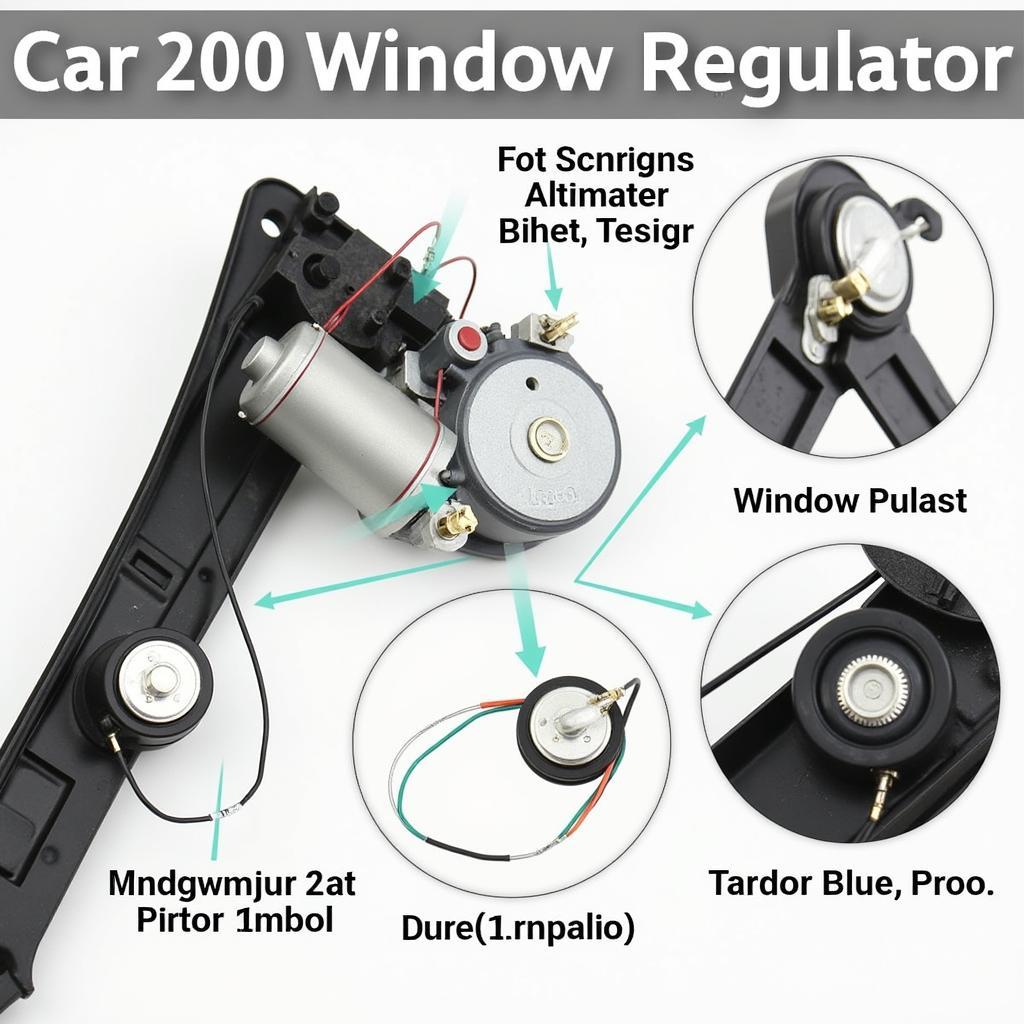Car window regulators are essential for your vehicle’s comfort and security, allowing you to control the movement of your windows with ease. However, like any mechanical component, window regulators can malfunction, leaving you with a window that’s stuck, slow, or making grinding noises. That’s where car window machine repair comes in. Whether you’re dealing with a faulty motor, a broken cable, or a worn-out regulator, understanding the repair process can save you time, money, and frustration.
Common Car Window Regulator Problems
Before delving into the repair process, it’s helpful to understand the common issues that plague car window regulators:
- Slow Window Movement: This often signals worn-out regulator parts or a problem with the window motor.
- Grinding or Clicking Noises: These sounds usually indicate a problem with the cables, pulleys, or the regulator mechanism itself.
- Window Stuck in Place: A window that won’t move up or down could be due to a broken cable, a faulty motor, or an issue with the window regulator track.
- Window Falls Down Repeatedly: This suggests a problem with the regulator’s ability to hold the window in place, often caused by worn-out parts.
The Car Window Machine Repair Process
The complexity of car window machine repair can vary depending on the make and model of your vehicle and the specific issue at hand. However, the general process typically involves the following steps:
- Diagnosis: A qualified mechanic will first diagnose the root cause of the problem. This might involve visually inspecting the window regulator system, testing the window motor, and checking for any fault codes using a diagnostic scanner.
- Component Removal: Once the issue is identified, the mechanic will remove the door panel to access the window regulator and related components. This step may require specialized tools to safely detach trim pieces and electrical connectors.
- Regulator Replacement or Repair: Depending on the extent of the damage, the mechanic will either replace the entire window regulator assembly or repair the specific faulty component (e.g., replacing a broken cable or a worn-out pulley).
- Reassembly and Testing: After the repair or replacement, the mechanic will reassemble the door panel, ensuring all components are properly secured and connected. They will then thoroughly test the window’s functionality to ensure smooth and quiet operation.
DIY vs. Professional Car Window Machine Repair
While some car enthusiasts might be tempted to tackle car window machine repair themselves, it’s generally recommended to seek professional assistance. Window regulators involve intricate mechanisms and electrical components that require specialized knowledge and tools to handle safely and effectively.
Attempting DIY repairs without proper experience can lead to further damage, safety hazards, or improper installation, potentially costing you more in the long run. Moreover, professional mechanics often have access to higher-quality replacement parts and can offer warranties on their services, providing you with peace of mind.
Finding Reliable Car Window Machine Repair
When it comes to your vehicle’s safety and functionality, entrusting car window machine repair to a reputable and experienced mechanic is crucial. Look for shops that specialize in automotive glass repair or have a proven track record of handling window regulator issues. Reading online reviews, asking for recommendations from friends or family, and comparing quotes from different shops can help you make an informed decision.
Conclusion
Car window machine repair is essential for maintaining your vehicle’s comfort, convenience, and safety. By understanding the common problems, the repair process, and the importance of professional expertise, you can make informed decisions to keep your windows operating smoothly for years to come.



